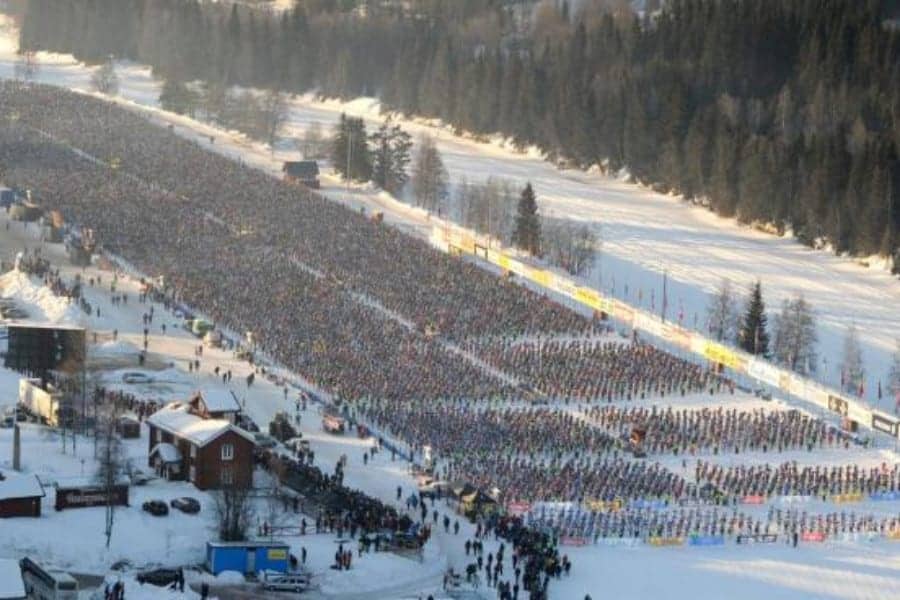photo caption: The Vasaloppet study population comprises all Swedish participants in the world’s largest long-distance (30, 45, or 90 km) cross-country ski race (Vasaloppet) between 1989 and 2010, together with frequency-matched individuals from the general population. The Vasaloppet was established in 1922, but it was not until 1989 that the personal numbers of participants were registered, making the present study possible. (photo courtesy of Vasaloppsföreningen Sälen-Mora)
In a long-term study of 200,000 long-distance skiers, participants were almost 30% less likely to develop Parkinson’s disease, according to researchers, in the Journal of Parkinson’s Disease.
To better understand the relationship between physical activity and Parkinson’s Disease (PD), investigators in Sweden analyzed the medical records of nearly 200,000 long-distance skiers who took part in the Vasaloppet cross-country ski race.
They established that a physically active lifestyle is associated with close to a 30% reduced risk for PD, which might be explained by a motor reserve among the physically active. However, this dissipates as individuals age, according to a media release from IOS Press.
“Exercise seems to protect against the motor symptoms of PD but not necessarily against the brain damage caused by PD,” explains co-lead investigator Tomas T. Olsson, MD, Department of Neurology, Skåne University Hospital, and Department of Experimental Medical Science, Experimental Dementia Research Unit, Lund University, Lund, Sweden.
“To understand the mechanisms behind the protective effects of exercise it is very important to establish whether exercise gives people a greater reserve or direct protection,” notes co-lead investigator Martina Svensson, Department of Experimental Medical Science, Experimental Neuroinflammation Laboratory, Lund University, Lund, Sweden.
To investigate the degree to which physical activity is associated with long-term lower risk of PD and whether this association can be explained by physically active people being able to sustain more PD neuropathology before the onset of clinical symptoms, investigators analyzed long-term data about the incidence of PD among long-distance skiers. They followed 197,685 participants (median age 36 years; 38% women) in the Vasaloppet, an annual cross-country ski race of up to 90 km, from 1989 to 2010 and compared them to 197,684 age-matched non-skiers. Incidence of PD was taken from the Swedish National Patient Registry
Investigators found that the skiers were almost 30% less likely to develop PD than non-skiers. However, this dissipates with time and increasing age, and results in diagnoses of PD among skiers matching the general population.
“We speculate that this would be consistent with the hypothesis that individuals who are physically well-trained have a greater motor reserve, which for every given level of Parkinson’s brain damage would result in less motor symptoms, thus delaying the diagnosis of PD,” states senior investigator Tomas Deierborg, PhD, Department of Experimental Medical Science, Experimental Neuroinflammation Laboratory, Lund University, Lund, Sweden.
“This is analogous to the well-established concept of cognitive reserve in dementia in which the well-educated can sustain more brain pathology without clinical dementia. It highlights the importance of staying physically active throughout life in order to have a reserve to better cope when the frailties and diseases of old age inevitably arrive.”
“If a person is physically active, it may be possible to maintain mobility for longer, despite the pathological changes in the brain,” Olsson adds.
[Source(s): IOS Press, EurekAlert]





